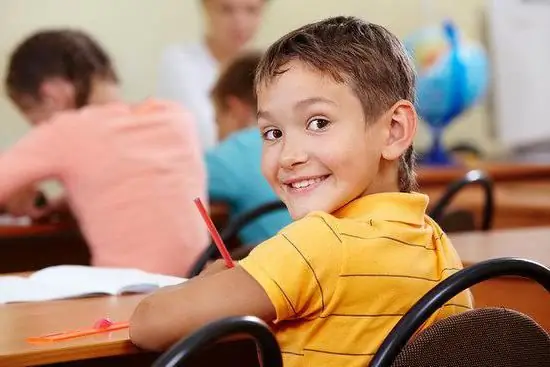2025 Author: Priscilla Miln | [email protected]. Last modified: 2025-01-22 17:55:24
A mobile and active child of 4-5 years old asks about 400 questions a day. And not all questions can be answered so that the baby understands. For this, there is children's experimentation in kindergarten. Why does the wind blow? Why do things fall down instead of up? Why is ice solid and water not? These and other questions can be answered, or you can conduct an experiment with the child, during which he himself will see the patterns with his own eyes.

Why introduce children's experimentation into preschool?
How useful is children's experimentation in kindergarten? Firstly, children have contact with objects, which allows them to understand their qualities and properties. Secondly, experimental activity awakens even greater curiosity, opens up a new world for the child, full of wonders and mysteries. Thirdly, children deepen their knowledge ofnature - living and inanimate, they expand their horizons, learn to think, observe phenomena, analyze and draw conclusions. And, of course, children's experimentation in kindergarten makes children feel like they discovered some phenomenon on their own, which naturally affects their self-esteem.

Types of experiments in the preschool educational institution
Experimentation can be demonstration and frontal.
- Demonstration observation is a type of activity in which the object of observation is one, it is with a teacher who conducts and demonstrates the experience to children. This type has its pros and cons, but the personal initiative and involvement of children is minimized. Only if the baby is already interested in experimental activities, he will carefully observe the progress of the experiment. Otherwise, the group may react passively.
- Frontal observation is a type of activity in which there are several objects, and they are in the hands of children. Of course, this kind of experimentation is more suitable to activate the work of all kids, to arouse their interest and curiosity. However, it can be difficult for one teacher to monitor a whole group: the speed of work for children is different, there is a risk of non-compliance with safety rules, etc. Therefore, it is better if several teachers are present at the frontal observation.

How to design a corner of experimentation in kindergarten?
The question is not idle, becausethe corner should be designed in accordance with safety rules and, at the same time, arouse the interest of children. So, in your corner, make room for:
- Permanent Exhibition. Here you can store rare items (stones, shells, crystals). You can add the best crafts for kids.
- Devices. Based on your work plan, there should be the necessary things (pipettes, jars, ropes, funnels, plastic bottles, etc.) in order to provide interesting and productive experimentation in kindergarten.
- Schemes. Prepare reminders for the children so that they know what they are dealing with (for example, "Water" about the properties of water, "Air", etc.). Reminders should be colorful and understandable to kids.
- Materials (natural, non-natural, unstructured).
- Place for experiments.

How to choose experiences according to the age of children?
The younger group should not be given difficult experiments with glass objects, a microscope, etc. Introduce them to air (experiments “We caught air” using balloons, “I see air” with a straw and a glass of water), wind (“What is wind?”), magnets, water (experiment “Sinking - not drowning”, “Does water change color?” using paints). Remember that children's experimentation in kindergarten is a way to awaken interest in science, so how bright and interesting your experiments will be, depends on how the child grows up!
Recommended:
Identification and development of gifted children. Problems of gifted children. School for gifted children. Gifted children are

Who exactly should be considered gifted and what criteria should be followed, considering this or that child the most capable? How not to miss the talent? How to reveal the hidden potential of a child who is ahead of his peers in terms of his level of development, and how to organize work with such children?
Children's help in kindergarten. Help form for kindergarten

Each parent is faced with the issue of admission of the child to kindergarten. The whole procedure begins with an appeal to the head of the preschool institution. You can bring your application throughout the year, which must be accepted. In addition, there is a list of additional documents that should be provided to the head of the garden
Gift for children at graduation in kindergarten. Organization of graduation in kindergarten

The day is coming when children have to leave kindergarten and go to school life. Many of them are looking forward to their first graduation, dreaming about how they will go to school. Any child after this day begins to feel like a truly “big” person
Experimenting in the preparatory group. Children's experimentation in preschool

In the conditions of modern society, such human qualities as independence, the ability to improve one's skills, constantly learn, expanding the knowledge base, become especially significant. And the sphere of education, including preschool, cannot stand aside, because it is she who forms the inclinations for the further development of children. A new area of work with kindergarten students is experimentation in preschool educational institutions
Children's fun in kindergarten. Scenarios of holidays and entertainment in kindergarten

All parents know that they need to develop their kids from an early age, and they want their own child to be better, smarter, stronger than their peers. While moms and dads themselves are not always ready to come up with entertainment and holiday scenarios. That is why children's entertainment is considered the most faithful and organic (in kindergarten)

